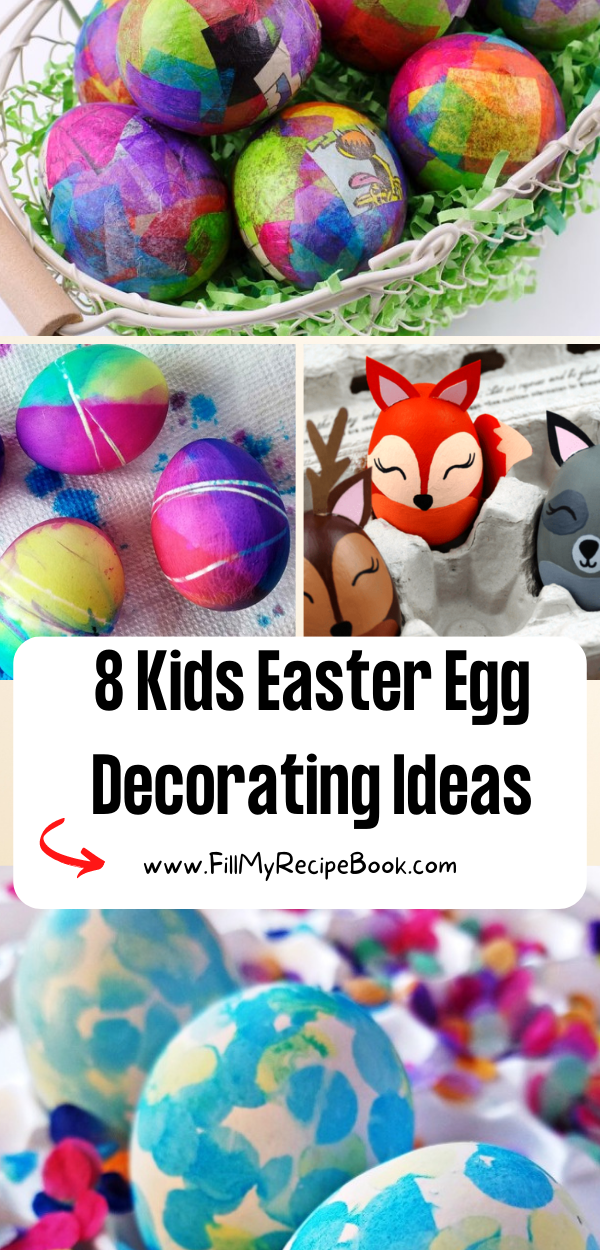5 Reasons We Decorate Eggs for Easter

The tradition of decorating eggs for Easter is one that holds centuries of history, deep symbolism, and cultural significance. This colorful practice transcends simple aesthetic appeal, providing a means for celebration, education, and bringing families together. Here are five compelling reasons why we decorate eggs for Easter:
1. Symbolic Representation of Life and Renewal

Eggs are a universal symbol of new life, making them a fitting emblem for Easter, which celebrates the resurrection of Jesus Christ and the renewal of spring. Decorating eggs with vibrant colors and intricate patterns signifies:
- Rejuvenation: As nature awakens from winter, eggs painted in fresh hues symbolize the revival of the earth.
- Fertility and Growth: In many cultures, eggs are associated with fertility, marking the time for planting and growth.
- Hope: The act of decorating eggs serves as a hopeful gesture for the future, both spiritually and naturally.
🌟 Note: Even those not celebrating Easter can appreciate the symbolism of renewal when decorating eggs.
2. A Tradition Steeped in History

The history of egg decorating for Easter spans various cultures, showcasing the tradition's global appeal:
- In Ancient Persia, eggs were dyed to celebrate Nowruz, the Persian New Year, which coincides with the vernal equinox.
- Ukraine boasts the tradition of Pysanky, where eggs are decorated with wax-resist methods, dating back to pre-Christian times.
- Europe saw the rise of egg decorating as a popular Easter practice during the Middle Ages, often linked to Christian narratives.
Today, egg decorating remains a cherished activity, merging historical roots with modern creativity.
3. A Creative and Educational Activity

Decorating eggs fosters creativity and can be an engaging educational tool:
| Activity | Educational Benefit |
|---|---|
| Painting | Develops fine motor skills and artistic expression. |
| Decorating with Patterns | Teaches patterns and symmetry. |
| Using Natural Dyes | Introduces children to science and botany through the use of natural substances for coloring. |
| Learning Cultural Stories | Provides insight into different cultures and historical events. |

4. Family Bonding and Tradition

Easter egg decorating is often a family affair, creating memories and fostering unity:
- It offers a shared activity where family members can work together, promoting bonding.
- Each year, the tradition can be passed down, ensuring that cultural practices are kept alive.
- The act of decorating eggs can also turn into a family competition or a treasure hunt, adding fun to the mix.
5. Egg Decorating as an Art Form

Egg decoration transcends mere celebration to become an art form:
- Pysanky: The Ukrainian wax-resist method produces intricate designs with deep cultural significance.
- Egg Carving: An advanced technique where parts of the eggshell are delicately carved away to reveal patterns.
- Fabric Wrapping: Wrapping eggs in patterned fabric to create subtle, elegant designs.
- Egg Blowing: The art of decorating blown-out eggs, allowing for hollow eggs to be kept as keepsakes.
🎨 Note: Advanced egg decorating techniques might require specialized tools and are best suited for experienced artists or those willing to learn.
In summary, decorating eggs for Easter brings together elements of tradition, symbolism, creativity, education, and family bonding. Whether for religious observance, cultural appreciation, or pure enjoyment, this practice enriches lives in multiple dimensions, making it a timeless tradition worth continuing. The process of decorating, hiding, and hunting for Easter eggs creates unforgettable memories, promotes community spirit, and fosters a sense of joy and renewal each spring.
Why do we use eggs to celebrate Easter?

+
Eggs are used to celebrate Easter because they symbolize new life, which aligns with the celebration of Jesus Christ’s resurrection and the renewal of spring. They have become a universal symbol of fertility, rebirth, and new beginnings.
What are some traditional ways to decorate Easter eggs?

+
Traditional methods include dyeing with natural or synthetic dyes, using wax-resist techniques like Pysanky, carving, fabric wrapping, and painting. Each culture and family might have its unique twist on these techniques.
Can decorating eggs be educational for children?

+
Absolutely! Decorating eggs can teach children about art, color theory, patterns, cultural history, and even basic botany if natural dyes are used. It promotes creativity, fine motor skills, and cultural understanding.
How does egg decorating vary across different cultures?

+
Various cultures have unique ways to decorate eggs. For example, Ukrainian Pysanky uses wax-resist techniques, Polish pisanki are batik-dyed, and in Greece, red-dyed eggs symbolize the blood of Christ. These methods often carry deep cultural and religious symbolism.
What are some modern trends in egg decorating?

+
Modern trends include using stickers, decoupage, glitter, and even creating 3D designs with materials like beads, ribbons, and fabric. There’s also a rise in sustainable practices, using natural dyes, and edible decorations like edible paint.